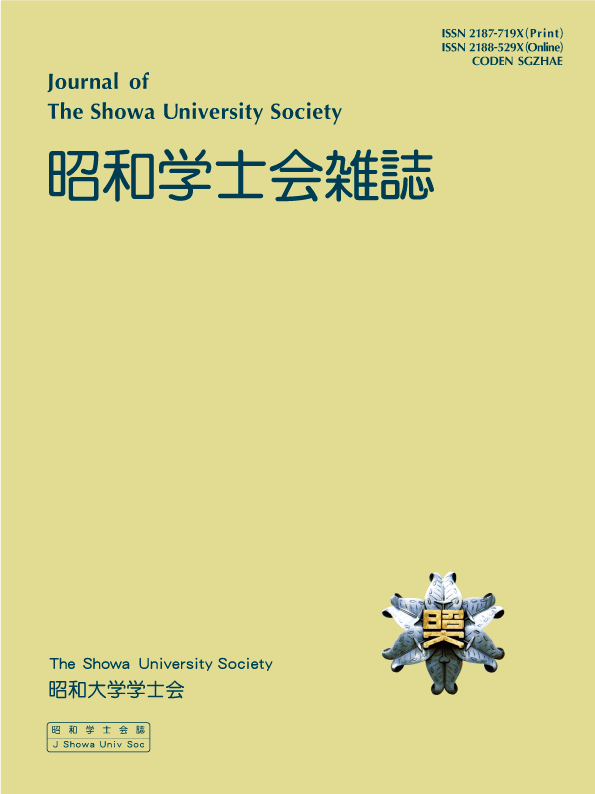Volume 80, Issue 4
Displaying 1-9 of 9 articles from this issue
- |<
- <
- 1
- >
- >|
Lecture
-
2020 Volume 80 Issue 4 Pages 291-301
Published: 2020
Released on J-STAGE: October 13, 2020
Download PDF (624K) -
2020 Volume 80 Issue 4 Pages 302-312
Published: 2020
Released on J-STAGE: October 13, 2020
Download PDF (708K) -
2020 Volume 80 Issue 4 Pages 313-316
Published: 2020
Released on J-STAGE: October 13, 2020
Download PDF (240K) -
2020 Volume 80 Issue 4 Pages 317-322
Published: 2020
Released on J-STAGE: October 13, 2020
Download PDF (1056K)
Original
-
2020 Volume 80 Issue 4 Pages 323-329
Published: 2020
Released on J-STAGE: October 13, 2020
Download PDF (611K) -
2020 Volume 80 Issue 4 Pages 330-336
Published: 2020
Released on J-STAGE: October 13, 2020
Download PDF (250K) -
2020 Volume 80 Issue 4 Pages 337-343
Published: 2020
Released on J-STAGE: October 13, 2020
Download PDF (859K) -
2020 Volume 80 Issue 4 Pages 344-351
Published: 2020
Released on J-STAGE: October 13, 2020
Download PDF (747K)
Case Report
-
2020 Volume 80 Issue 4 Pages 352-358
Published: 2020
Released on J-STAGE: October 13, 2020
Download PDF (616K)
- |<
- <
- 1
- >
- >|
